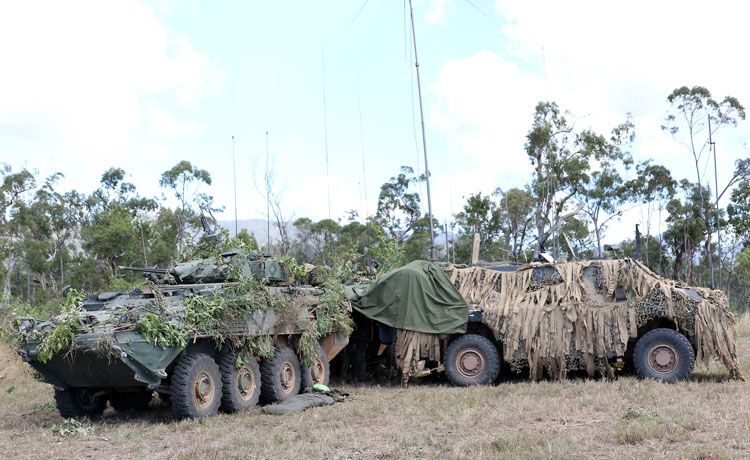Prime Minister Jacinda Ardern has ordered Defence Force bosses to respond urgently to dangerous firing ranges in Afghanistan, but revealed it will still be years before they are safe.
Ardern called in the Chief of Army, Major General John Boswell, to firmly lay out her expectations, only 24 hours after the release of the Stuff Circuit documentary Life + Limb.
And in another development, Defence broke its silence - under pressure from the prime minister - with Boswell fronting for an interview with Stuff Circuit in which he said: "I feel for the people who are still suffering and I hope we can get that place into a state where they can get on with their lives."
His comments, and the public scolding of Defence by the prime minister, marked a rapid turn-around in an issue which has dragged on for six years.
A survey of the ranges last year found almost 40 square kilometres remains dangerous.
The catalyst was the release of the documentary, which exposed the deaths and injuries of 17 civilians in nine separate incidents connected by the United Nations to the New Zealand firing ranges in Bamyan.
One of those incidents, in April 2014, killed seven children in a village adjacent to New Zealand's main firing range.
A survey of the ranges last year found almost 40 square kilometres remains dangerous.
- Afghan children killed by explosion near NZ firing range
- Blast from NZ firing range ammunition kills Afghan children
- Crucial evidence suddenly upsets Operation Burnham inquiry
- New Zealand urged to clear ordnance from Afghanistan and compensate families of seven children killed
In an interview with Stuff Circuit, the prime minister had a message to the families: "We have a responsibility to clear our sites and we will - it's taken too long in my view."
She said work would begin in the mountainous central Afghan province once weather allowed - likely to be April.
"As soon as the snow clears, I expect that work to begin."
Because clearance work can only be carried out for 28 weeks of the year due to the heavy winters, it would take longer than two years to properly clear the ranges.
Asked whether the $10 million set aside to carry out the clean-up was enough, Ardern said, "money isn't the issue", and acknowledged that it would likely cost more than that.
Ardern also revealed that she had known about the issue since the middle of last year, and made it clear she was not happy it still has not been dealt with.
Asked why it had taken so long, she deferred the question to Defence.
Boswell, when asked, said there was not one single, simple explanation - rather a series of bureaucratic back-and-forths that had been going on for years.
But he admitted a report supplied to Defence last year by Human Rights Watch, which set out concerns about the number of deaths and injuries, "really did give our thinking some momentum".
- NZ Defence Force to answer questions on Operation Burnham raid
- The SAS is telling a Government inquiry a story, and it's not going well
Asked whether he accepted that New Zealand unexploded ordnance could be responsible for the incident which killed seven children, Boswell said, "of course there is a possibility."
But he said the challenge for Bamyan is that there is "so much unexploded ammunition.
"There is a potential for a tiny amount of it to be ours."
In a statement to Stuff Circuit before the documentary was broadcast, Defence contended that the area used as firing ranges had been used by Soviet and American forces before New Zealand's arrival in 2003.
When the PRT left in 2013, Boswell said, the ranges were cleared according to the standards that were in place at the time.
Those standards were changed months later.
"We did everything we possibly could to not leave anything behind, we did leave those ranges in good shape," Boswell said.
The problem was, he said, that the clearance was of the surface.
"We didn't do a sub-surface clearance."
Ordnance which could be decades old was often found beneath the surface and could make its way to the top over the years.
"It may be under the surface but it moves all the time," he said.
Boswell added that: "We regret any deaths".
Asked whether the injured and the families of the dead should be compensated, Boswell said, "Compensation for harm that can be linked to New Zealand would require very careful consideration across government."
But he said it was difficult to confirm which army's ordnance was responsible for each specific incident.
He acknowledged, though, that was impossible, too, for the families of the victims, who are all poor.
Boswell said the documentary brought back memories of his time as a PRT commander in 2010, and his thoughts went back to the people of Bamyan.
"What really struck me was the challenge they have in Bamyan as a whole around unexploded ordnance and how it does contaminate some of the areas they can move through...and then you have innocent parties.
"It's a huge problem in that area but the key thing is we do have an obligation to clear that range to the required standard.
"I'm glad we've finally got it to the stage we can do that."






